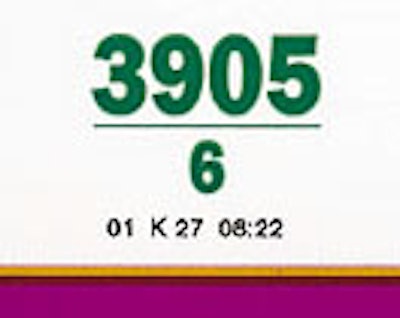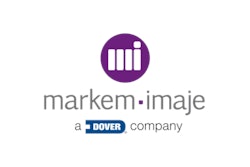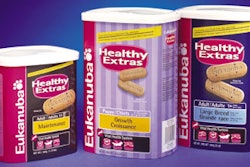Picture this: A lawn-and-garden retail customer is dissatisfied with the condition of a bag of lawn fertilizer. If that bag was manufactured by Exopack LLC’s Tomah, WI, plant, it can now be traced back to the shift and machine to determine and troubleshoot the problem.
That’s possible thanks to a code applied by a newly purchased SmartDate® thermal-transfer coder from Markem (Keene, NH) mounted onto a bagmaking machine. The black code is printed onto printed rollstock that forms a side gusset when the bag is made.
The coder began running in fall ’01, installed as part of a plant-wide quality improvement initiative by Exopack, formerly the Flexible Packaging Division of International Paper.
The 150ꯠ sq’ Tomah plant manufactures and prints primarily low-density polyethylene bags for food, beverage, and chemical applications. The bagmaking machine that’s equipped with the SmartDate coder, however, is used almost exclusively for lawn-and-garden bags.
To make the bags, the plant manufactures blown film and in a separate step flexo-prints the rollstock in up to eight colors. The printed film is brought to the bagmaking machine that forms it into side-gusseted, bottom-sealed bags. Just prior to bag forming, a photoeye triggers the Markem unit to print the approximately 1/8” code onto the material. These bags typically hold between 10 and 50 lb of lawn-and-garden products, according to Paul Freiberg, Exopack’s manufacturing manager.
Primary drivers
“We wanted to be able to trace an individual bag out in the field back to a production date,” notes Freiberg. “By being able to do that, we can look at our quality records, packaging materials, the machine, production methods, and personnel that produced the bag,” he explains. The traceability applies to bags throughout the distribution chain, from when they’re filled to the point the consumer buys them at the store.
A sample code reads 01 K27 08:22. That code tells Exopack that the bag in question was made in 2001, on November (represented by the letter K) 27, at 8:22 a.m.
“Once we have a production date,” says Freiberg, “we can determine if the problem with a bag had to do with a problem on a particular day, or if we need to embargo something. In short, it helps us isolate a possible problem.”
Freiberg acknowledges that Exopack had many choices when it came to coding equipment. “Markem was referred to us by our engineering group and by our sister plant in Griffin, Georgia. They were successful with the machine at their plant that produces plastic bags similar to those that we make here in Tomah,” says the plant’s manufacturing manager.
Freiberg says that the decision to add the thermal-transfer unit was driven mainly by “our quality focus. Customers were a major factor. They believed this code was necessary, and they saw the value in it. We worked with The Scotts Company to develop a code they wanted for the side gusset of their bag, just underneath their product number.”
Since the machine began running in October, Freiberg says, “it’s worked well, and we haven’t had any issues with it. Markem was here to help us program it and to get us started. They’ve provided support throughout the process.” Based on its performance, Freiberg says, “we have plans to put coding systems on several additional lines by the end of 2002, and we might add ink-jet printers from Markem for higher-speed applications.”


























